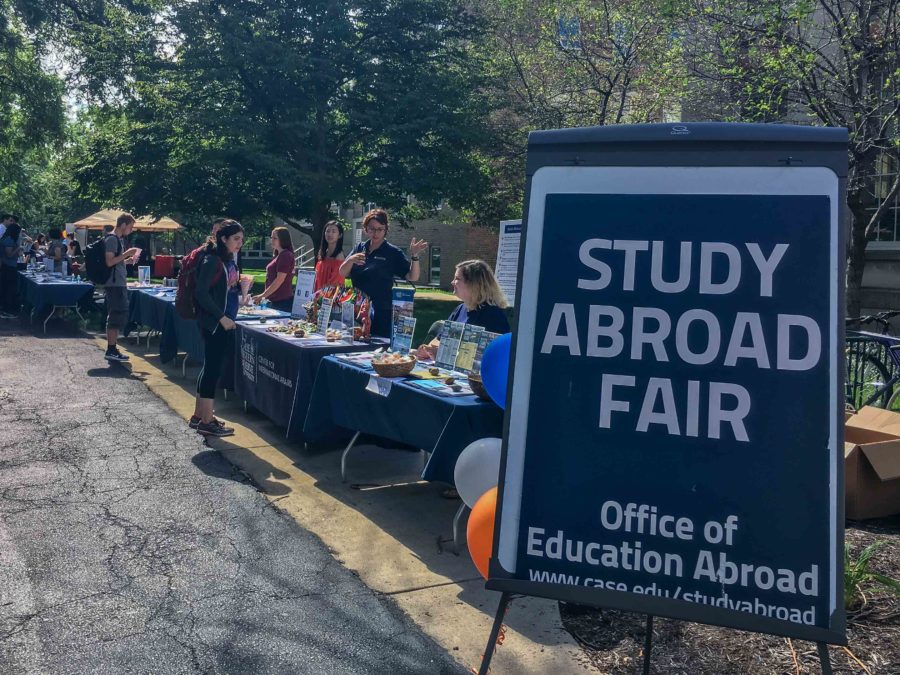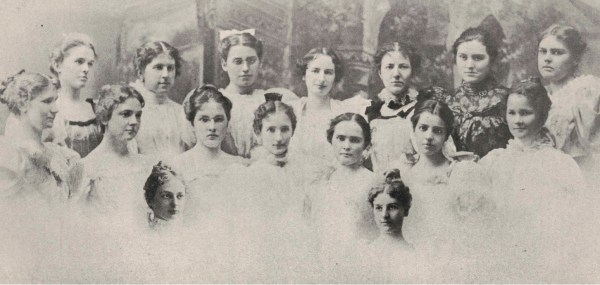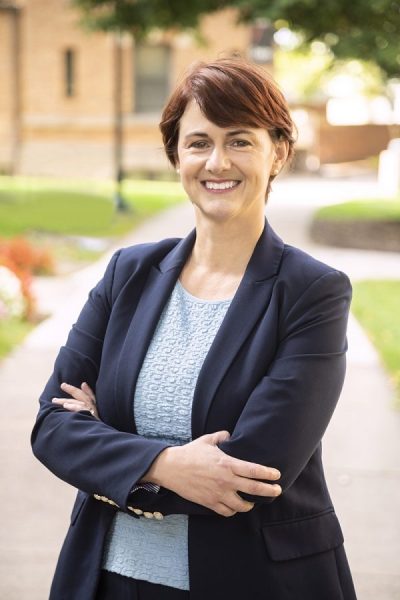Study Abroad: Financially accessible?
With universities across the country getting increasingly competitive about attracting prospective students, or ‘prospies,’ one of the things that’s getting the spotlight on almost every campus tour is the seemingly omnipresent study abroad program. The ease with which students can travel internationally and the access they have to international academic and cultural education is sold as a major “pro” to prospective students. And Case Western Reserve University is no different. With 45 percent of students studying abroad, more than three times the national average, they claim to be one of the most accessible programs in the country.
But how accessible are these programs, really? Can every student study abroad? And what’s their experience like when they do?
Andrea Lau, fourth-year International Studies and Psychology major and Arabic minor studied abroad in Amman, Jordan, last spring. Studying abroad was something she’d always been determined to do, Lau said. “When I went on college visits, I always wanted to hear about study abroad…. I actually met with Autumn [Beechler Stebing, Assistant Director of Education Abroad] freshman or sophomore year.”
But Lau’s experience was unique in that rather than applying for one of the study abroad programs listed on the Office of Education Abroad’s website, Lau participated in a “Petition Program,” wherein she petitioned to be allowed to complete a program with a non-CWRU approved, private, non-profit corporation called “Amideast”. Amideast sends students to various cities throughout the Middle East, and is actually not that different from some of the third-party providers that Office of Education Abroad uses to send students to similar places, though the Office of Education Abroad tends to be more selective.
One huge pro with Lau’s “Petition Program” was that unlike Baldwin Wallace University or Kent State University, where financial aid only applies to university-approved programs, CWRU allowed Lau to keep her financial aid as she studied with Amideast. She got a refund on her University Scholarship, and if she had been receiving state grants, need-based funding, or private loans, that aid would have been applicable to her program fees as well. Lau still had to pay for any travel outside of the program that she did, but she, like most students, drew on her savings, and says any debt she found herself in post-studying abroad was worth it.
Outside of “Petition Programs,” the Office of Education Abroad also offers Long-Term Study Abroad opportunities, and short-term, or faculty-led, study abroad programs. The former can last for a semester or a full year, while the latter occur either over Fall Break, Spring Break, during “Maymester” for a few weeks in May after the end of Spring Semester or over the summer.
SUB: Long-Term Study Abroad Programs
There are two facets to the financials of long-term study abroad programs at CWRU: tuition and the cost of everything else, including room, board, books and supplies, local transportation and airfare. With long-term study abroad programs, like Lau’s “Petition Program,” all financial aid, except Federal Work Study but including academic scholarships, state grants, need-based funding and private loans, are applicable to the student’s program. This can impact the cost of both tuition and everything else.
If a student intends to use need-based aid during their study abroad program, they are required to submit a “Study Abroad Cost Sheet” to the Office of University Financial Aid, so that they can reevaluate the student’s financial aid package. By estimating what the costs of housing, food, school supplies and local transportation will be at the their oversea institutions, the Office of Financial Aid “may adjust the cost of attendance and financial aid eligibility to reflect the costs incurred by the student,” said Venus Puliafico, director of University Financial Aid.
If the cost of a program, not taking into account tuition, is more expensive than the cost of a standard semester at CWRU, the student may receive more aid. But if the cost of a student’s program is cheaper than the cost of a semester at CWRU, their need-based aid could be reduced. The financial aid packages the students receive are all in proportion to the cost of the program.
Tuition is a different story. While students always pay room, board and other program fees directly to the oversea institution that is providing these services, tuition in long-term programs continues to be paid directly to CWRU, regardless of where the student is studying.
Beechler-Stebing explained that “many study abroad institutions that CWRU partners with are exchange partners who send us students in return for ours, so there is no tuition exchanged at all, just students.” Each student continues to pay tuition to his or her home institution to cover the other student’s study abroad. But even with non-exchange programs, programs that might be more or less expensive than a semester at CWRU, students continue to pay CWRU tuition.
This can work in a student’s favor if they plan to study at a more expensive oversea institution that they would be otherwise unable to afford. But with oversea institutions that charge less tuition than CWRU, students may wonder where their extra money is going. Although sometimes the reduced price of room and board at less expensive institutions can compensate for the extra tuition students have to pay to CWRU, this is not always the case.
“We keep semester and academic year study abroad costs neutral by ensuring that whether a student participates in an exchange program, or a more (or less) expensive program, they know upfront what their tuition costs are,” stated Beechler-Stebing in an email, “and can make the best decision for their study abroad based on academics and personal preferences.”
SUB: Short Term Programs
The short-term, or faculty-led programs offered at CWRU operate on a different financial structure. Despite being shorter in length, faculty-led programs can actually sometimes be less financially accessible for students.
Students not only have to pay additional CWRU tuition for their additional course in the programs, but the program fees they are charged do not always cover all the costs of their study and travel. While federal financial aid can be used for tuition and program fees, students’ CWRU scholarships don’t carry over into these shorter programs, and this can be a real problem when students end up having to pay out of pocket for food, local transportation and international airfare.
With all this talk about how expensive financial aid can be, it’s easy to get discouraged. But what most students don’t realize about study abroad is that there’s a whole untapped source of revenue out there, one that most students never consider seriously. Private scholarships.
In addition to the partial or full financial aid that is offered to students by their institutions, by their home state, and by the federal government, there are a number of private scholarships that students can apply to. The Office of Education Abroad has a list of over 50 different scholarships available to students on their website, and it’s not even a complete list. But when asked how many students apply for these scholarships, Beechler-Stebing replied, “Not nearly enough.”
“With the number of scholarships that are available … it’s continually disappointing to me. Because the thing is, people go on study abroad … and they consider it very valuable for their future success—and then they become successful and then they start a scholarship because they want more people to study abroad … So they throw money at students, who don’t apply.”
Beechler-Stebing said she understands, to a degree, why students don’t apply. Though she looks at the list of scholarships that are available to students every day, students themselves are less familiar with what scholarships are out there and how to navigate them. “I understand that students get very busy and bogged down with different requirements, and they don’t always have or make time to look through the scholarships list,” she said.
SUB: Can STEM Students Study Abroad?
Evelyn Rueda and Katie Fechner, who are fourth and fifth-year chemical engineering students respectively, both participated in a faculty-led program in which they completed one of their core major requirements, ECHE 362: Chemical Engineering Laboratory, in Denmark, rather than in their senior year at CWRU like most of the other chemical engineering majors. Led by Professor Mohan Sankaran, Rueda and Fechner spent four weeks of their summer in the world-class lab at Denmark Technical University.
“The equipment was amazing,” Fechner said. Rueda started to explain, but then realized she had to dumb it down a little for the non-engineer. “They have large-scale real processes they use to analyze the results of experiments,” she said, unlike CWRU’s chemical engineering facilities.
The question that next springs to mind for most CWRU students is: How were two chemical engineering students able to study abroad at all? A widely held perception on campus is that the rigor of College of Engineering students’ academic requirements prevents them from taking a semester ‘off’ to go abroad. But the reality is that there are actually a wide variety of oversea institutions at which engineering students can gain credit for core or non-core classes. “It’s pretty likely you’ll find a class that’s the same,” said Fechner, talking about the likelihood of finding classes at an overseas institution that are transferrable.
In fact, the top 10 majors studying abroad include some of the more strict academic programs: biology, biomedical engineering, biochemistry, nursing, chemical engineering and cognitive science.
Institutions labeled “GE3,” institutions that CWRU has labeled as offering engineering programs that on par with CWRU’s, are apparently not the end-all-be-all of engineering students’ study abroad options—though of course they do offer many more classes that are transferrable to CWRU. The biggest limit on engineering students studying abroad is timing. There are certain classes that they must take at CWRU that are offered only during certain semesters, so if students wait too long to consider studying abroad, they may have painted themselves into a corner as far as their class scheduling is concerned.
The most common reason students are unable to study abroad, Beechler-Stebing explained, is that they don’t plan far enough in advance. Students wait until their senior year to inquire about their study abroad options, or they pick a program without knowing whether or not it offers the courses they need. It’s not about finances or course approvals, but about when a student starts thinking about studying abroad as a viable option.
“It’s never gonna be easier than when you’re in college,” said Beechler-Stebing. “It’s never gonna be easier to go and spend five months living in another country, maintaining your current job status … and for study abroad specifically, it’s never gonna be cheaper, and it’s never gonna be better facilitated.”
















